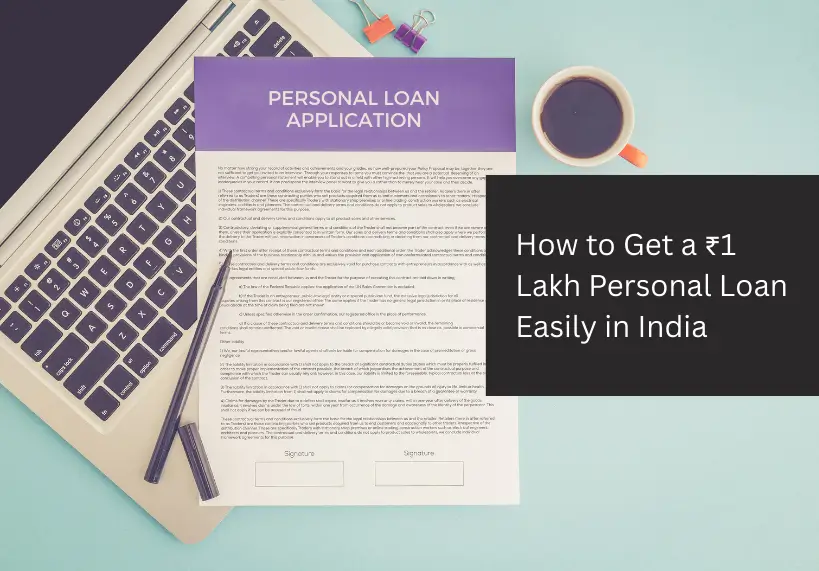
A personal loan is a debt instrument that provides respite when a financial shortcoming arises uncalled for. These loans are unsecured in nature and are the fastest to avail in times of need. Lenders who have innovated with personal loans have made it more affordable and provide flexible options as against debt instruments like credit cards, which often charge exorbitant rates.
While wanting to avail a personal loan, you may want to apply for a specific loan amount.. However, the loan amount approved is not always equal to the amount you wished for. This is not an arbitrary decision and the amount of loan ultimately approved is influenced by many factors out of which ‘Income’ and ‘credit score’ being the primary determinants. So the question that arises is – How much loan can I get in my Salary?
This article will help you understand the various determinants and factors that influence the approval of personal loan amount.
Meeting the basic eligibility criteria
In order to avail a personal loan, any and every individual must qualify under the basic personal loan eligibility criteria spelled out by the lender. While the basic personal loan eligibility criteria may differ from lender to lender, mostly the parameters are a common set. The eligibility criteria for most digital lenders is around –
- Age – 23 years or above
- Individuals with a minimum monthly income of INR 30,000 or above
If an individual meets these basic eligibility criteria, then he must apply for a personal loan.
Factors that determine the Personal loan amount approval
While mentioned earlier, there are a mix of factors that contribute to determining the final approved personal loan amount. Income, credit history, employment and many such factors play a reasonable role in the decision. However, one dominant factor is the FOIR. Let us understand this further, in detail.
FOIR
The Fixed Obligation to Income ratio (FOIR) is that ratio that determines the amount of debt taken against the income of the applicant. Different lenders consider different FOIRs while lending but a FOIR of 40% to 50% is considered as a desired ratio.But how is FOIR calculated?!
Let’s assume for instance –
Yogesh earns a monthly income of ₹50,000. He has the following debts to pay on a monthly basis –
Home Loan EMI : ₹10,000
Credit card bills: ₹10,000
ebike Loan EMI : ₹1000
Total EMIs = ₹21,000
FOIR is calculated as – Sum of all the monthly EMIs / Monthly income X 100
Yogesh’s FOIR = (21,000/50,000) X 100 = 42%
As Yogesh’s FOIR doesn’t exceed 50%, there is a higher possibility that lenders will extend a loan to him. While lenders are being decisive of the amount of loan to extend to you, they will consider your current FOIR and the resultant FOIR after you take a loan from them.Generally, lenders will not extend a loan that will exceed your FOIR by 60%. To avail higher loan amounts you need to reduce your FOIR, in order to improve your Personal loan eligibility.
To understand FOIR, further let’s understand the factors that are considered along with FOIR:
- Income – Income is, of course the primary factor taken into consideration while checking basic eligibility criteria. Also, Income stands as the primary determinant of your FOIR. A good income will ensure you have the capacity to cover all the expenses that you incur in the month.
- Employment stability – The number of years you have been employed and the reputation of the employer do play a considerable role in determining the job stability. A good employment stability ensures that you will continue to have a stable source of income in the years to come
- Credit history – Your credit history is an indicator of how prudently you have serviced all past and existing debts. It improves the credit worthiness and reliability of a loan seeker. If your credit records are good, a lender may be willing to extend a little more than your FOIR limits.
- Utilities and Other expenses – Lenders will also consider the number of additional expenses that you have on your platter. This includes all the expenses that exclude the “needs” bucket of expenses. Your leisure or luxury expenses, if in abundance, can be a deterrent for lenders to increase the loan amount to be extended to you.
So, if you are looking for a higher personal loan amount against your income, the only mantra you need to adopt is ‘Stay much within the FOIR limit’ !
Related articles –
Decoding Loan Jargon – Personal Loan Glossary
What is Debt to Income Ratio (DTI)? How Does it Factor in your Loan Eligibility?








